Are you on the fence about the VitaClay cooker? What does it do? How does it compare to the Instant Pot? Do you really need one more kitchen appliance? Here’s my review of the VitaClay cooker, including why you might choose one, which model to buy, and how it compares to pressure cooking.
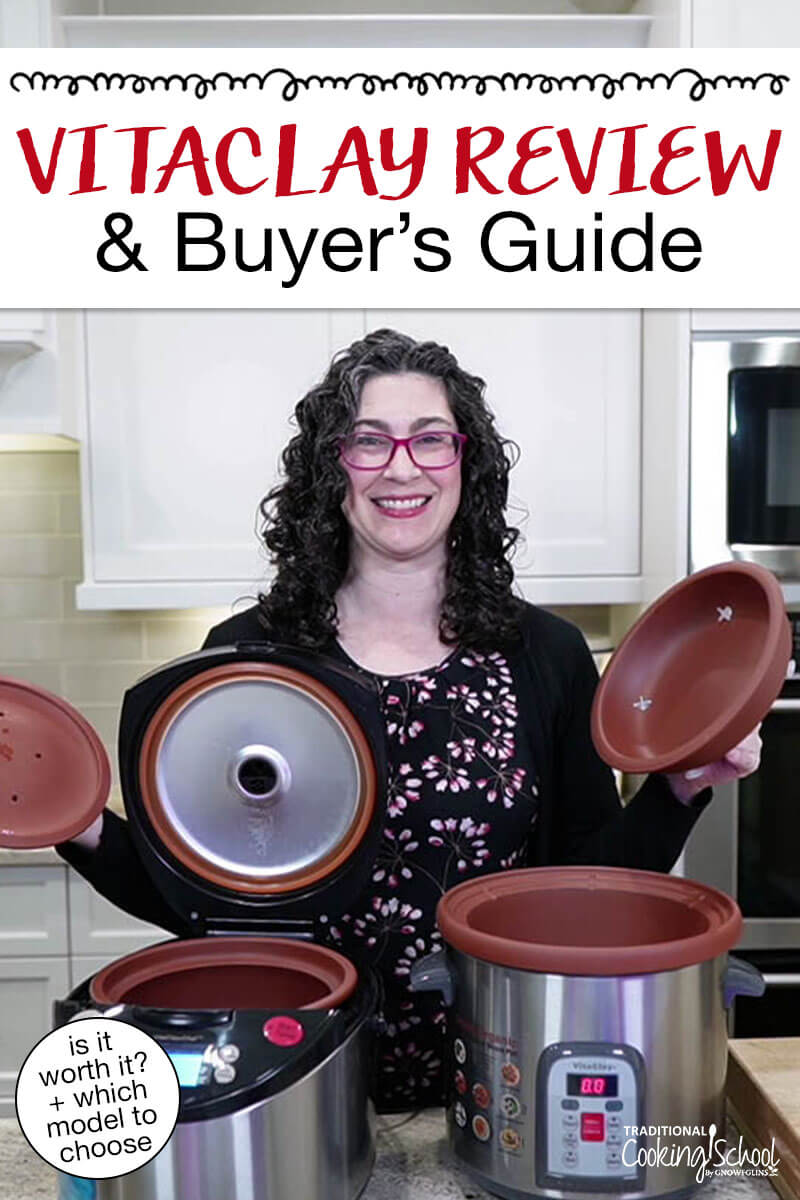
I am using our VitaClay cooker more and more!
I soak whatever I’m making, of course, whether grains or beans, pop them in, turn it on, and voila… gorgeous cooked grains, soups, broth, and more! So easy.
The clay cooking pot is non-toxic… no lead, no non-stick, nothing to react or worry about. And the cooker itself just works. If I had to describe its functionality, I would say it’s between a slow cooker and a pressure cooker. Faster and hotter than a slow cooker… about 1/5 of the time… yet not high pressure like the Instant Pot.
I’ve been using it more and more (and more)… so much so I purchased an extra clay cooking pot. Because sometimes the one is tied up with rice or a stew in the fridge, yet I want to use it again.
You can take this as a sign that I really love it, because otherwise I would not have invested in a second pot! That’s my seal of approval right there!
To be honest, it’s taken time to grow on me. I believe the company sent the cooker to me in 2017. At first, I accepted but didn’t take it out of the box for a few months. And even when I did, I wasn’t sure what to do with it.
I started with rice and beans… and slowly started using it for more and more. To the point where for about the last year, I use it as often as I do our Instant Pot, and sometimes more. I use it ALL the time!
The VitaClay is ideal for anyone who wants hands-free cooking but might be afraid or intimidated about pressure cooking. Or someone who likes a hands-free cooker, but wants things done faster and hotter than a slow cooker will do. Or even if you’re ok with pressure cooking, but just want another option to “set it and forget it”.
And even though most of the recipes you find out there don’t use traditional soaking methods like we do, I’ve found it very easy to incorporate soaking into my own use of it.
Pssst… we have a brand-new “Fast” Slow Cooking Class featuring the VitaClay. If you’re an Eat God’s Way cooking program student already, I’ve been sharing details regularly. If you’d like to know more about this class, including current enrollment dates, how it works, and how much it costs, contact me by email at [email protected] or by text 1-317-434-1180.
Table Of Contents
VitaClay Review: The Benefits
1. It’s 5 to 6 times faster cooking than a slow cooker.
Because the VitaClay outer container seals up and insulates the cooking environment, you don’t get as much heat loss as with a slow cooker. Therefore, your dishes cook faster.
However, if you work outside the home, and you LIKE putting your ingredients in a slow cooker and knowing that you’ll walk in the door at night knowing it’s perfectly done, perhaps the VitaClay being 4 to 5 times faster isn’t the best option for you… 8 hours in a slow cooker is a better fit for you.
Note: There is an automatic warm function for 9 to 12 hours (depending on model) if your food is done way early. For food safety reasons, we recommend keeping foods on warm for no more than 2 hours.
2. It retains heat better than a slow cooker.
This is not only because of the outer insulated cooking unit, as I just mentioned, but also because a slow cooker often has a hole in the lid that vents heat.
3. You can open and close the VitaClay more often than a slow cooker or pressure cooker during cooking.
If you open and close a slow cooker frequently, you’ll add tons of time to your recipe. And you simply can’t open and close a pressure cooker when it’s under pressure. So you have an advantage here of being able to stir and/or check on how your dish is doing without significant downsides. Having said that, when you’re doing a traditionally “soaked” recipe such as soaked rice or other grains, soaked oatmeal, or soaked porridge, I don’t recommend opening and closing the VitaClay cooker to ensure a better result. You’re more likely to get maximum water absorption, rather than under or over, if you don’t open and close.
4. You don’t have to wait for pressure changes.
With a pressure cooker, you not only have to wait for it to come up to pressure, you also have to wait for pressure release. These aren’t a big deal if you’re planning for them, but if you’re in a hurry, these wait times can seem impossibly long and inconvenient when you’re stuck… just waiting!
5. Hands-free cooking.
Like a slow cooker or pressure cooker, the VitaClay is also hands-free. We sure love our “set it and forget it” appliances, don’t we? This is another one you can love, and given that it’s faster than a slow cooker and you’re not locked out when under pressure, like with a pressure cooker, it can seem like the very best of all. At least in certain situations.
6. The unglazed clay insert pot is arguably the least toxic of all our cooking options.
Those stainless steel pots and/or insert pots for slow cookers and pressure cookers are generally regarded as safe (and I would agree), yet stainless steel is still minimally reactive, especially with acidic foods and longer cook or soak times. With slow cookers, many of the ceramic cooking pots or coatings are found to contain lead or other toxins in the pot themselves or the coating. On the other hand, the VitaClay clay cooking pot is not reactive at all, is bare clay (no coating), and has no toxic heavy metal contamination, period.
However, the darker colored clay pots have more iron oxide, so if iron overload is an issue for you, you may want to choose the VitaClay stoneware multi-crock instead of the clay multi-cooker. I will say, though, that I am watching my iron closely and my iron has only gone down during the year I’ve been using the VitaClay cooker day in and day out. My iron was too high and now it’s doing very well… all while using this cooker. I think potentially that’s because I don’t often cook acidic ingredients, which might react and pull iron into the food. Just food for thought.
Please note: some models of VitaClay offer a lead-free stoneware pot, which is better than slow cookers’ insert. However, I recommend the clay option anyway, due to winning my vote as being guaranteed non-toxic.
7. Moist, moist, moist. Flavor, flavor, flavor.
Due to the sealed cooking environment and the natural ability of clay to create tender and moist dishes, you’ll love the meats, grains, and soups/stews that come out of your VitaClay cooker.
8. Versatility.
With the exception of being able to make “dry” dishes (pressure cooker is the same), you can make a lot of moist “wet” dishes in your VitaClay cooker! Soaked grains and beans, soups, stews, broth, porridges, desserts, yogurt, and steamed veggies.
To shop VitaClay and save, use this link: TradCookSchool.com/vitaclay and code WARDEE10 will get you a good deal! The link takes you to the VM7900-8 multi-cooker (my favorite) but feel free to click around if you prefer another model.
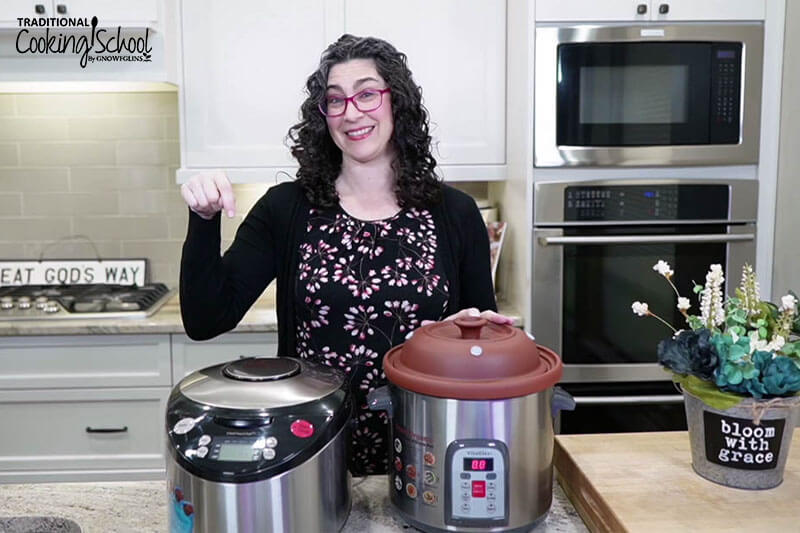
Which VitaClay Should You Buy?
Currently, the VitaClay collection includes two major styles of cookers: the multi-cooker and the multi-crock. They also have a stand-alone rice cooker, but I’m choosing not to cover that because the multi-cooker and multi-crock are the most versatile.
Both cookers contain a variety of useful functions from slow cooking to porridge to keep warm and more. They are not exactly the same in their functions and we’ll get into where they differ in a bit.
Visually, they differ in shape. The multi-cooker is oval while the multi-crock is circular. I can’t think of a reason to prefer one or the other due to this, other than if you can more easily fit a circular appliance in a small kitchen (however it is 2 to 3 inches taller).
Now I could go into great detail about slight feature differences here and there, but I think that’s less productive than looking at the major differences that may have an impact on your cooking. Thus, I’m not going to overwhelm you with tiny things. Here are the few functional differences that may sway you one way or the other:
1. The multi-cooker offers cooking times in 10 minute increments (as opposed to 30 minutes), which you may prefer if you use this feature a lot (I do). I find this useful when cooking meats or breakfast porridges as well as steaming veggies. You can fine tune with 10 minutes, where you might end up over or under with 30 minutes. Having said that, because you can open and close the cookers, you can still stop the cooking early as needed. So this isn’t a deal breaker, but I do think it’s convenient enough to be a major factor. For me, at least.
2. Both the multi-cooker and multi-crock have a delay timer. Yet, while the multi-cooker offers it across the board on all the functions (exception: Yogurt mode), you’ll only be able to program in a time delay on the Porridge mode of the multi-crock.
3. The multi-crock offers larger volume (6 quarts), which you may prefer if you’re feeding a larger family or you like to make larger amounts of soups, stews, broth, beans, meats, etc.
4. The multi-cooker has a Rice cooking mode, while the multi-crock does not. However, you can still cook rice in the multi-crock using the Porridge mode.
For me, I do use the 10-minute increment cooking times quite a bit. I also really love the Rice cooking mode on the multi-cooker. (I haven’t tried cooking rice on Porridge setting in multi-crock yet, but I’m sure it works, too.) Plus, I use the time delay feature across the board. So if I had to choose between the cooker styles, I would (and do) choose the multi-cooker.
What about size? The multi-cooker currently comes in 3- or 4-quart size, and I would always recommend going with the larger capacity. The multi-crock comes in 6 quart, which is a great capacity no matter what.
To shop VitaClay and save, use this link: TradCookSchool.com/vitaclay and code WARDEE10 will get you a good deal! The link takes you to the VM7900-8 multi-cooker (my favorite) but feel free to click around if you prefer another model.
VitaClay v. Instant Pot
I have reviewed Instant Pot models in the past. If you could only purchase a VitaClay or an Instant Pot, which would you choose? That is YOUR choice to make and only you know what is best for you. Yet in this VitaClay review, I can give you some factors to consider. Here’s what I would take into consideration:
- The Instant Pot wins with being the fastest overall and certain models giving you larger capacity (6-, 8-, 10-quart). Additionally, you can sauté foods in the Instant Pot, while you cannot with the VitaClay.
- The VitaClay multi-cooker wins with ease of use (getting in and out whenever and not having to wait for pressure to release) as well as being a fast slow cooker.
- Personally, I think the texture of certain foods like rice and cereals are better in the VitaClay.
- Finally, if you love slow cooking, the slow cook function of the VitaClay is better than the Instant Pot. The Instant Pot doesn’t get hot enough to be efficient in my opinion. And remember, the VitaClay is around 5 times faster than a traditional slow cooker. So the VitaClay wins here.
Want to Learn More About “Fast” Slow Cooking?
We have a brand-new “Fast” Slow Cooking Class featuring the VitaClay!
If you’d like to know more about this class, including current enrollment dates and how it works, contact me by email at [email protected] or by text 1-317-434-1180.
...without giving up the foods you love or spending all day in the kitchen!

2 free books:
Eat God's Way
Ditch the Standard American Diet, get healthier & happier, and save money on groceries...
We only recommend products and services we wholeheartedly endorse. This post may contain special links through which we earn a small commission if you make a purchase (though your price is the same).
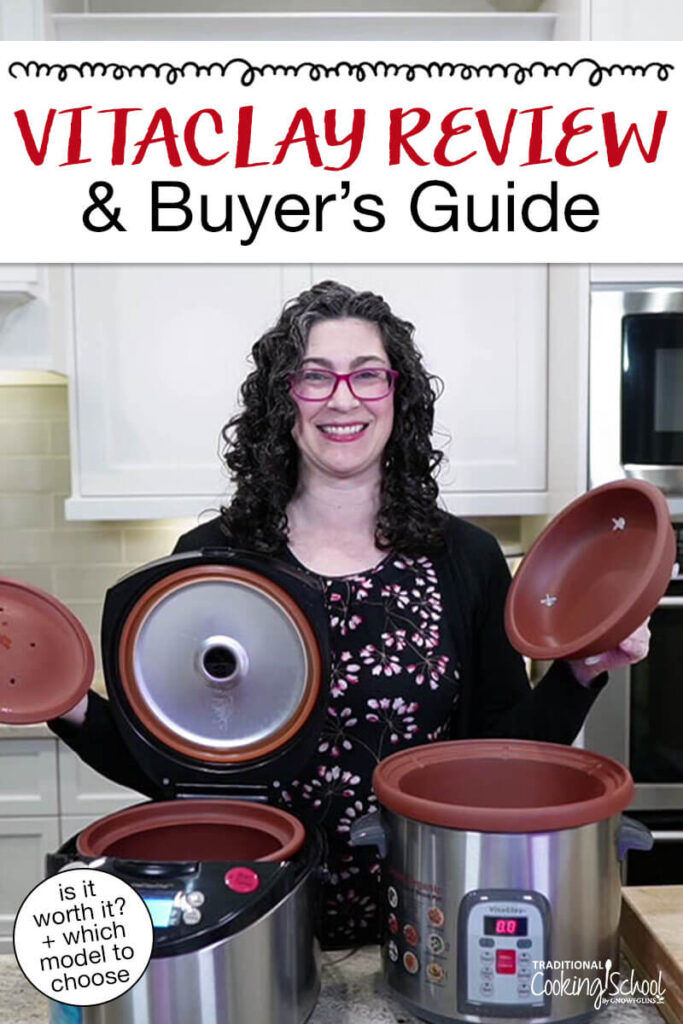
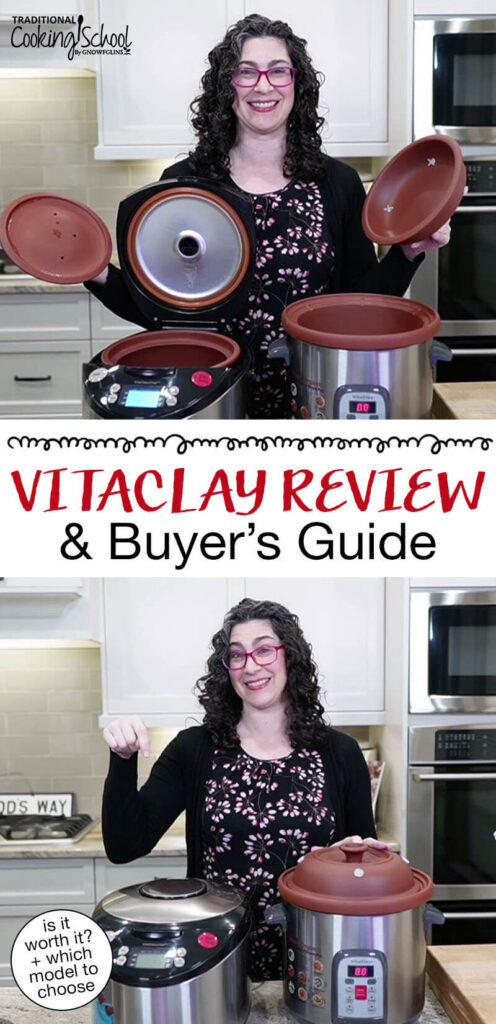
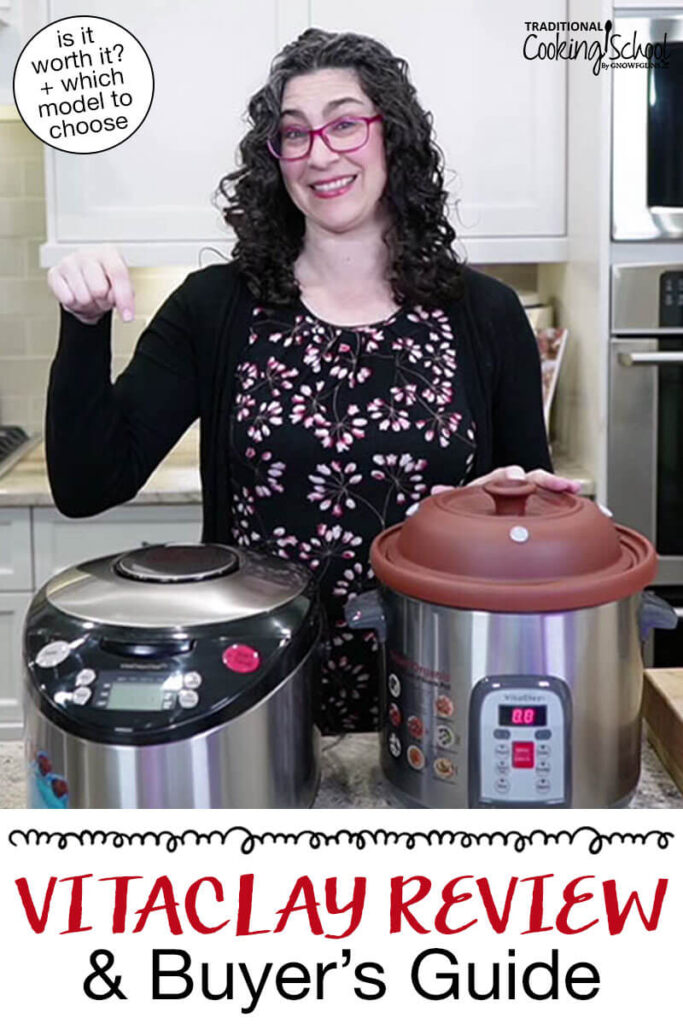
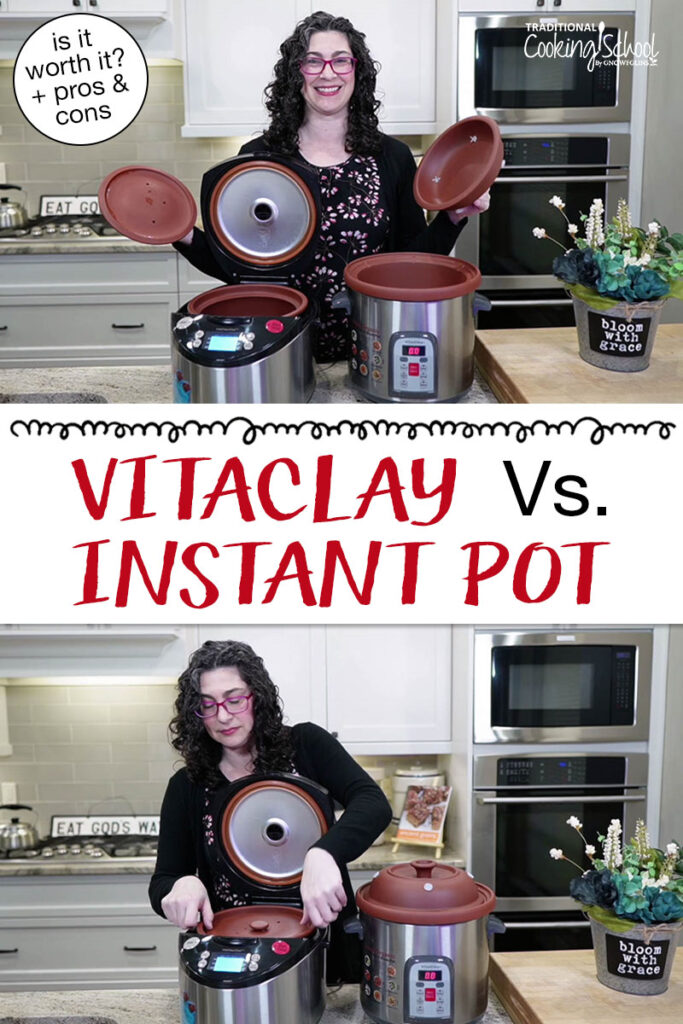
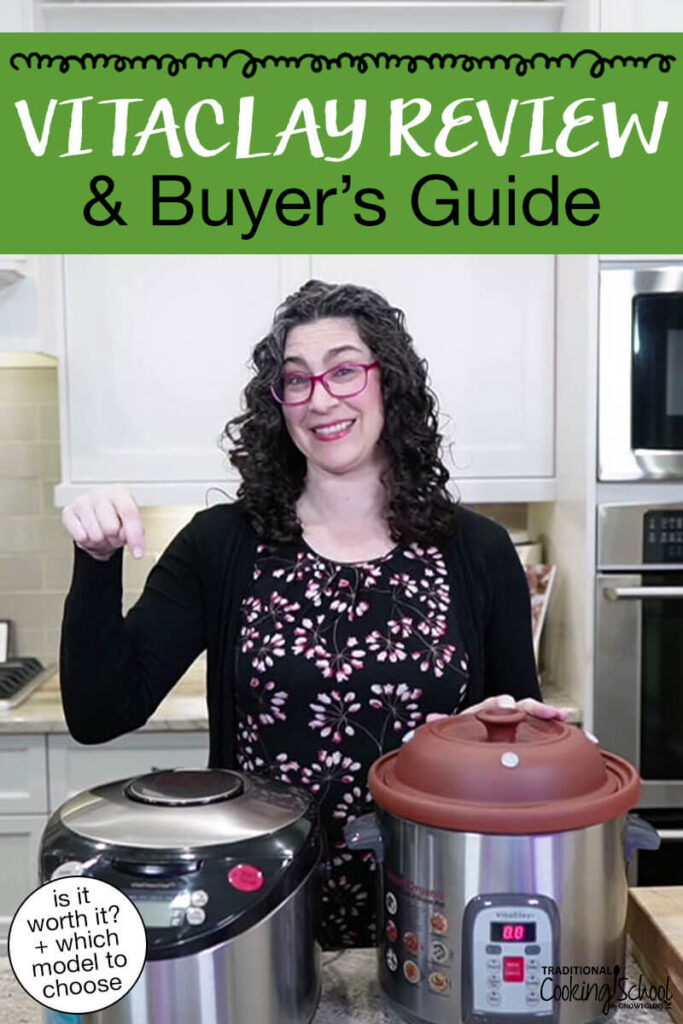


Is there documentation that there isn’t any lead or cadmium in the clay? No toxins? If not, this is a no brainer. Thank You.
Hi Patricia,
Here is a link to VitaClay’s current lead testing reports.
https://vitaclaychef.com/pages/anresco-certificate-of-analysis
I agree, it is a no brainer. 🙂
~ Makenzie, TCS Customer Success Team
You say you have your iron levels tested. Have you had your blood lead level tested? It concerns me that not even one month after Tamara Rubin of Lead Safe Mama tested a VitaClay Chef Slow Cooker and found it to contain lead, they release test results showing no lead. I’d be interested in knowing how their testing was done and would feel much more comfortable if they had had the whole unit tested and not just the clay cooking pot.
Hi, Jessica,
Wardee gets her lead tested every 6 months as well and she has no lead accumulation in her body.
~Peggy, TCS Customer Success Team
I rally enjoyed your video on vita clay. Thank you.